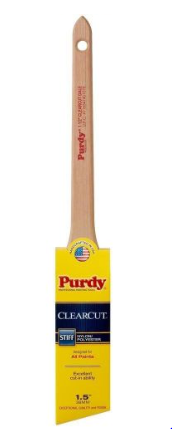If it solidifies totally, sand it smooth. Sand all surface areas with the grain utilizing 100-grit paper. To make sure no little bits of dust mar the finish, vacuum the cabinets inside and out, then rub them down with a tack fabric to capture any particles that the vacuum misses out on. Dee states, "Hand sanding is the very best technique on oak since you can press the paper into the open grain, which a power sander or sanding block will miss out on. Cabinet Painting 28212." When utilizing a tack cloth, unfold each brand-new cloth fully, to one layer, then crumple it to get the best dust collection surface area.
However they simply sink into open-grained woods such as oak, ash, mahogany, or hickory. Brushing putty, the pudding-thick, oil-based coating Dee used on these oak cabinets, fills the grain as it primes the wood. A number of cautions: It needs to be applied with a good-quality nylon-polyester brush, which you'll have to discard after each coat.

Starting at the top of the cabinet, brush on the primer or brushing putty across the grain, then "tip off" pass the brush lightly over the damp finish in the direction of the grain (Cabinet Painting 28214). Always tip off in a single stroke from one end to the other. Give it a day to dry.
/midsection-of-man-painting-window-sill-at-home-1161773402-0ccbdc45f25a435aa09eacb5d0bffb34.jpg)
Sand any profiled surface areas with a medium-grit sanding sponge. When you're done, whatever must be glass-smooth. Follow the hidden structure of the cabinet or door with the brush. Where a rail (horizontal piece) butts into a stile (vertical piece), for circumstances, paint the rail initially, overlapping a little onto the stile.
What Does How To Paint Cabinet Painters 28210 A Front Door Without best paint to use on kitchen cabinets Brush Marks ... Mean?
Where a stile butts into a rail, paint the stile initially. Squeeze a thin bead of latex caulk into any open joints. Pull the pointer as you go, then smooth the caulk with a wet finger. Fill any little dents, scratches, or dings with vinyl spackle, smoothed flat with a putty knife.
Spot-prime the spackle, and any spots where the brushed-on guide is "burned through," with a spray can of fast-drying oil-based primer. Wait an hour, then sand the primer gently with 280-grit paper. Vacuum all surface areas, and clean with a tack cloth. The hole in a caulk tube's idea must be no bigger than the suggestion of a sharp pencil.
Work from top to bottom, using the paint throughout the grain, then tipping it off with the grain. For cabinet interiors, apply the paint with a smooth-surface mini roller, which leaves a slight orange-peel texture. Sand all surfaces with 280-grit paper, then vacuum and tidy with tack cloth. Cabinet Painting 28211. For the last coat, break out a new brush.
Brushes pick up dust, so constantly pour paint into a separate container to avoid contamination of the paint in the can. If any paint is left over, put it back into the can only through a fine-mesh strainer. The technique for prepping and painting doors, drawers, and shelves is the very same as on the cabinets, except that all the work is done on a table to lower the chance of drips, runs, and droops. Cabinet Painting.
The Basic Principles Of How To Paint Cabinets - Hometips
Follow the very same prep sequence when it comes to cabinetsclean with deglosser, fill the holes, sand, vac, and tackand the exact same priming sequence: in this case, two coats of brushing putty. Smooth the flat surface areas on the panel and the frame with a random-orbit sander. On bevels or profiles, apply effort and a medium-grit sanding sponge.

When priming or painting paneled doors, brush in the list below series to get the best-looking surface area in the least quantity of time: begin with the location around the panel, then do the primary field of the panel, then end up with the stiles and rails around the edges. As you go, clean up any paint that ends up on adjacent dry surfaces. Cabinet Painting Contractors 28277.

After vacuuming and tacking all the surfaces, spray a fast-dry guide on any spots with spackle or bare wood where the sandpaper "burned through" the primer. Wait an hour before sanding - Cabinet Painters 28204. Remove all dustfirst with a vacuum, then with a tack clothand apply the surface coat. Suggestion it off with the grain.
Vacuum and tack every piece, then brush on the final coat. To avoid drips on outdoors edges, pull the brush towards them. To avoid drips in corners, first unload the brush by removing the paint, then paint by pulling the brush away from the corner. If a drip laps onto a dry surface, clean it up instantly.
The Definitive Guide for How To Paint Interior Doors - The Home Depot
John Dee, a perfectionist, prefers to do one side at a time, keeping the faces flat so they do not get runs. However that's 2 days of drying time per doorone day per side. Here's his technique for painting both sides in a day. Twist two screw hooks into holes drilled in an inconspicuous door edge (the lower edge for bottom cabinets, the upper edge for leading cabinets).